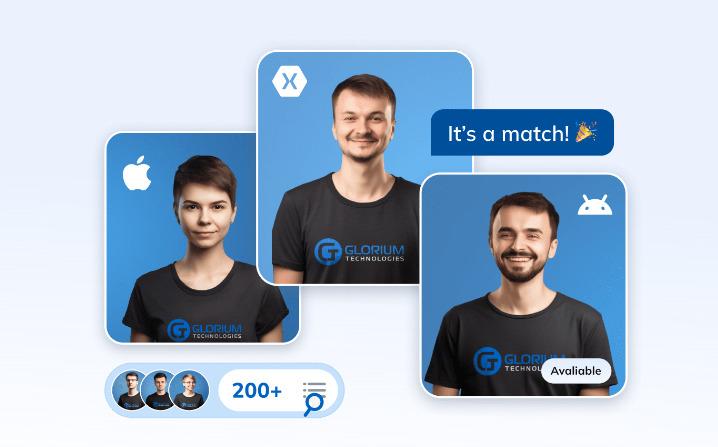In today’s digital age, Software as a Service (SaaS) has revolutionized how businesses operate. SaaS applications have become the backbone of modern enterprise infrastructure, offering scalable, cost-effective, and accessible solutions for a wide range of business needs. This comprehensive guide will delve into SaaS app development, covering the essential aspects from conception to deployment and maintenance.
1. Introduction to SaaS App Development
1.1. What is SaaS?
Software as a Service (SaaS) is a software distribution model where applications are hosted by a service provider and made available to customers over the internet. Unlike traditional software that is purchased and installed on local machines, SaaS applications are accessed via web browsers, which simplifies deployment and management. Key examples include Salesforce, Microsoft Office 365, and Google Workspace.
1.2. Why Develop a SaaS Application?
Developing a SaaS application offers several benefits:
- Scalability: SaaS apps can easily scale up or down based on demand. This is achieved through cloud infrastructure that adjusts resources as needed.
- Accessibility: Users can access SaaS applications from anywhere with an internet connection, facilitating remote work and global collaboration.
- Cost Efficiency: SaaS eliminates the need for on-premises hardware and software maintenance, reducing overall IT costs.
- Frequent Updates: SaaS providers can deploy updates and new features seamlessly, ensuring users always have access to the latest functionality and security improvements.
2. Planning and Strategy
2.1. Defining Your Objectives
Before diving into development, clearly define the purpose and objectives of your SaaS application. Consider the following questions:
- Who is your target audience? Understanding your users’ needs will guide your feature set and user experience design.
- What problem does your app solve? Your SaaS application should address a specific pain point or need in the market.
- What are your business goals? Define how your SaaS app will contribute to your revenue model, user acquisition, and overall business strategy.
2.2. Market Research
Conduct thorough market research to validate your idea and identify your competitors. Analyze similar SaaS applications to understand their strengths and weaknesses, and find opportunities for differentiation.
2.3. Creating a Feature List
Develop a comprehensive feature list that outlines the core functionalities of your SaaS application. Prioritize features based on their importance to the user and their alignment with your business goals. Common features in SaaS apps include:
- User Management: Registration, authentication, and user roles.
- Data Storage: Cloud-based storage for user data and application information.
- Analytics and Reporting: Tools for tracking usage, performance, and generating reports.
- Integration Capabilities: APIs and connectors for integrating with other software and services.
3. Designing the Application
3.1. User Experience (UX) Design
User experience is critical in SaaS applications. A well-designed UX ensures that users can easily navigate and utilize the application. Key considerations include:
- Usability: Design intuitive and user-friendly interfaces. Conduct user testing to gather feedback and refine the design.
- Accessibility: Ensure your application is accessible to users with disabilities by adhering to accessibility standards and guidelines.
- Performance: Optimize your application for fast loading times and responsive interactions.
3.2. User Interface (UI) Design
UI design involves the visual aspects of your application, including layout, colors, typography, and branding. A visually appealing and cohesive UI enhances user engagement and satisfaction.
- Consistency: Maintain consistency in design elements across different screens and components.
- Responsiveness: Design your application to be responsive, ensuring it works well on various devices and screen sizes.
3.3. Prototyping
Create prototypes of your application to visualize its functionality and design. Prototypes help in validating concepts and gathering feedback before moving into full-scale development.
4. Choosing the Right Technology Stack
4.1. Front-End Technologies
The front end of your SaaS application is what users interact with. Choose technologies that enable responsive, interactive, and user-friendly interfaces. Popular front-end technologies include:
- HTML/CSS: The foundation of web development for structuring and styling content.
- JavaScript: Enables dynamic and interactive features. Frameworks like React, Angular, and Vue.js are commonly used for building modern web applications.
- Design Frameworks: Tools like Bootstrap and Material-UI can streamline the development process with pre-designed components.
4.2. Back-End Technologies
The back end handles the server-side logic, database interactions, and application functionality. Key considerations include:
- Programming Languages: Popular choices include Python, Ruby, Java, Node.js, and PHP.
- Frameworks: Use frameworks like Django (Python), Ruby on Rails (Ruby), or Express.js (Node.js) to expedite development.
- Databases: Choose between SQL databases (e.g., PostgreSQL, MySQL) and NoSQL databases (e.g., MongoDB) based on your data requirements and application complexity.
4.3. Cloud Infrastructure
Select a cloud provider to host your SaaS application. Leading cloud platforms include:
- Amazon Web Services (AWS): Offers a wide range of services for computing, storage, and database management.
- Microsoft Azure: Provides cloud services and integrations with Microsoft products.
- Google Cloud Platform (GCP): Known for its data analytics and machine learning capabilities.
4.4. Security Considerations
Security is paramount in SaaS applications. Implement robust security measures, including:
- Data Encryption: Encrypt data in transit and at rest to protect sensitive information.
- Authentication and Authorization: Use strong authentication mechanisms and implement role-based access control.
- Regular Security Audits: Conduct regular security audits and vulnerability assessments to identify and address potential threats.
5. Development Process
5.1. Agile Methodology
Adopt agile development methodologies to enhance flexibility and responsiveness. Agile practices, such as Scrum or Kanban, involve iterative development, continuous feedback, and regular releases.
5.2. Version Control
Use version control systems like Git to manage code changes and collaborate with development teams. Platforms like GitHub, GitLab, and Bitbucket provide additional features for code review and project management.
5.3. Testing
Implement a comprehensive testing strategy to ensure the quality and functionality of your application. Testing types include:
- Unit Testing: Tests individual components or functions for correctness.
- Integration Testing: Ensures that different components work together as expected.
- End-to-End Testing: Validates the entire application flow, simulating real user interactions.
- Performance Testing: Assesses the application’s performance under various load conditions.
5.4. Continuous Integration and Deployment (CI/CD)
Implement CI/CD pipelines to automate the process of integrating code changes, running tests, and deploying updates. CI/CD tools like Jenkins, Travis CI, and GitHub Actions streamline these processes and improve development efficiency.
6. Deployment and Maintenance
6.1. Deployment Strategy
Plan your deployment strategy to ensure a smooth transition from development to production. Consider the following:
- Staging Environment: Use a staging environment to test the application in conditions that closely resemble production.
- Blue-Green Deployment: Implement blue-green deployment strategies to minimize downtime and ensure a seamless user experience during updates.
6.2. Monitoring and Analytics
Implement monitoring and analytics tools to track application performance, user behavior, and system health. Tools like Google Analytics, New Relic, and Datadog provide valuable insights and help in identifying and resolving issues.
6.3. User Support
Provide comprehensive user support to address queries and issues. This may include:
- Documentation: Create user manuals, FAQs, and help guides.
- Customer Support: Offer support channels such as email, chat, or phone.
- Feedback Mechanisms: Implement feedback mechanisms to gather user input and continuously improve the application.
6.4. Regular Updates and Maintenance
Regularly update your SaaS application to address bugs, introduce new features, and enhance security. Implement a maintenance schedule and communicate updates to users to manage expectations.
7. Scaling and Optimization
7.1. Scaling Strategies
As your user base grows, ensure your application can handle increased traffic and demand. Scaling strategies include:
- Horizontal Scaling: Add more servers or instances to distribute the load.
- Vertical Scaling: Increase the resources (CPU, memory) of existing servers.
- Load Balancing: Use load balancers to distribute incoming traffic evenly across servers.
7.2. Performance Optimization
Optimize your application to improve performance and reduce latency. Techniques include:
- Caching: Implement caching strategies to reduce server load and improve response times.
- Database Optimization: Optimize database queries and indexing for faster data retrieval.
- Code Optimization: Refactor code and use efficient algorithms to enhance performance.
8. Conclusion
SaaS app development is a complex but rewarding process that involves careful planning, design, and execution. By understanding the key aspects of SaaS development, from initial concept to deployment and scaling, you can create a successful and impactful application that meets the needs of your users and supports your business goals.
By focusing on user experience, selecting the right technologies, and implementing best practices in development and maintenance, you can build a SaaS application that not only delivers value but also stands out in a competitive market. As technology continues to evolve, staying informed about industry trends and advancements will be crucial for the ongoing success and growth of your SaaS application.

